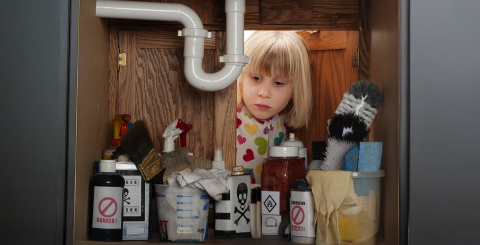The 8 steps to making a home insurance water damage claim

Water can make its way into your home a variety of ways, from a leaky roof to a backed-up sewer or broken washing machine hose. As we explain in our guide to preventing water damage in your home, there are a number of different problems that can lead to a water damage claim.
Did you know that water damage is the leading cause of home insurance claims? Even if you take all the right steps to prevent it and protect yourself, your home and property could still get hit with water damage at some point.
Promutuel Insurance wants to help. That’s why we’ve put together these 8 steps to making a home insurance claim in the event of water damage.
Types of water damage covered by home insurance
First of all, it’s important to understand what your home insurance actually covers in the event of water damage. Generally speaking, damage caused by a leak or an overflowing sanitary sewer, as well as damage caused by a broken public water pipe, is covered by basic home insurance.
However, damage caused by water infiltration or sewer backup is only covered if you added additional coverage to your home insurance policy to cover these kinds of damage. If you’re not sure what’s covered in your current policy or if you want to make changes to it, feel free to contact your representative.
Water damage: 8 steps to follow when making a claim
By following these 8 steps, you’ll have all your ducks in a row, which makes it easier for your insurer to compensate you. Here’s what you need to do to file a home insurance claim in the event of water damage:
1. Report the damage as soon as possible
The first thing you have to do when filing a home insurance claim for water damage—or for any other reason, for that matter—is to notify your insurer of the damage as soon as possible. The insurance representative who handles your claim will be able to check the coverage listed in your home insurance policy before you incur any expenses.
2. Limit the damage and keep it from getting worse
You are responsible for limiting the damage and keeping it from getting worse. Here are a few helpful tips:
- Burst pipe: Temporarily shut off or plug problematic water supply lines. If you have serious water damage, be sure to shut off the electricity to avoid short circuits and the risk of electrocution.
- Leaky pipe or hose: It is important to try to locate the leak to prevent further damage. Look for signs of a leak (e.g., traces of mold, bad odors, clogged gutters, cracks in the foundation, crumbling brick joints, high humidity, etc.).
- If you are unable to limit the damage, quickly remove high-value items (whether expensive or sentimental) from the affected area.
- If you are unable to move large furniture (sofas, cabinets, chests of drawers, etc.), try to lift them off the ground so the water can’t damage them (or at least not as much). This will make it easier to restore your furniture.
3. Notify affected third parties
If the water damage affects a third party (e.g., the municipality or a neighbour), it’s important to notify them of the situation so they can quickly do what they can on their side to minimize the damage.
If the damage was caused by a problem with a public infrastructure, send a written notice to the city within the prescribed time frame to remain eligible for compensation. The municipality will also be able to plan the repair or work required to address the problem. It may also be able to send out an emergency team to quickly minimize the damage.
If you’re a tenant: Notify the landlord as soon as possible and discuss who will inform the other tenants in the building.
If you’re a co-owner: Notify your co-ownership syndicate.
4. Have a plumber handle emergency repairs
If you’re unable to quickly get the leak under control or if you need help with a permanent solution, you may need to call a plumber. Depending on the urgency of the situation, (i.e., time of day of the claim), you might have to pay extra for emergency service.
5. Use a cleaning service
Once the situation is under control, it’s time to call in a specialized cleaner to prevent further damage.
Note: If the damage is significant, your insurer’s claims adjuster may take care of this step for you.
Important: Be sure to keep your receipts for emergency work done to get the situation under control. Your insurer may reimburse you for this if it accepts your claim.
6. Make a list of your damaged or destroyed property
It’s important to make a list of your property and furniture when you take out home insurance and keep it up to date. When a loss occurs, having an up-to-date inventory of your belongings will help you prepare a list of damaged goods that includes their value and sales receipts.
7. Hold on to defective and damaged items
Some insurers may ask you for proof in order to process your claim. If the water damage was caused by a faulty part or pipe, be sure to keep the part in question. In other cases, photos of the source of water damage could be helpful.
Important: Do not throw out your damaged or destroyed property! These items could also be used as proof.
8. Work with your insurance company
Throughout the insurance claim process, be sure to cooperate with your insurer by giving them all the information they need: invoices, inventory of your property, sales receipts, proofs of loss, etc.
After evaluating your file, your insurer will compensate you based on the cost of repairs for recoverable property. If your property cannot be repaired, your insurer will compensate you for the cost of replacing it, based on the coverage in effect in your policy. You may therefore be compensated based on the item’s value on the day of the loss.
To protect yourself against water damage and any other problems, request a home insurance quote or contact your Promutuel Insurance representative to add this coverage to your policy today.
*Some restrictions and exclusions apply.




